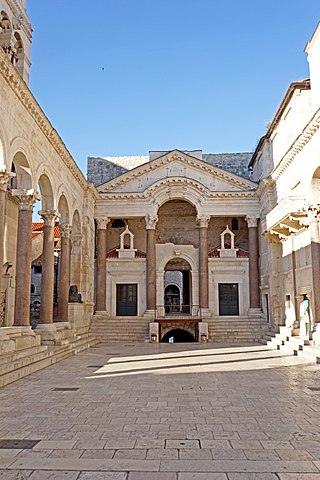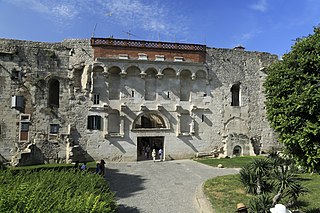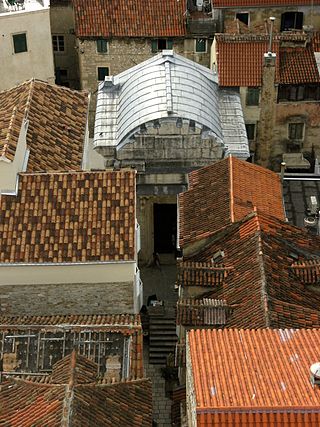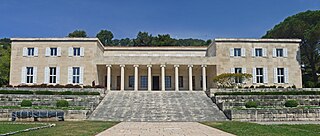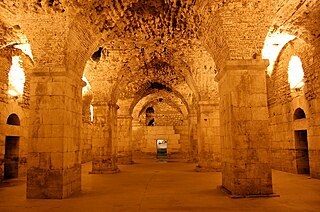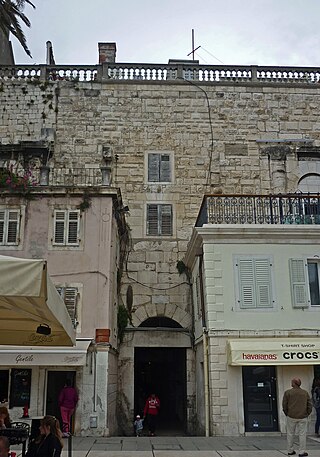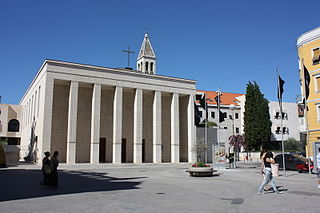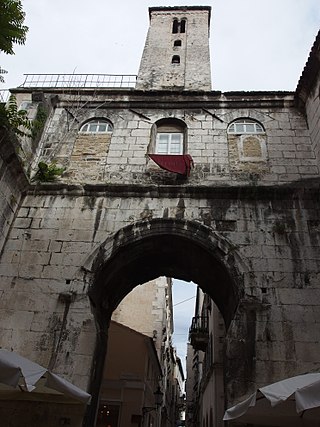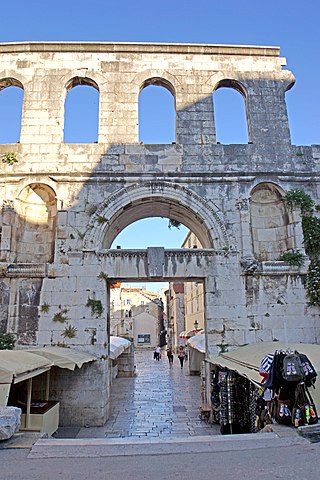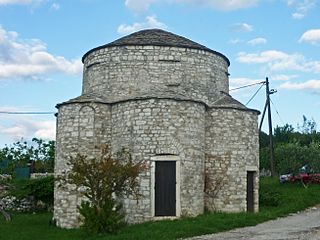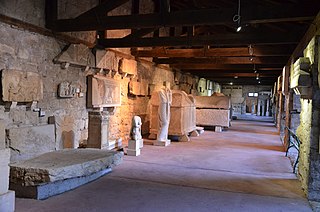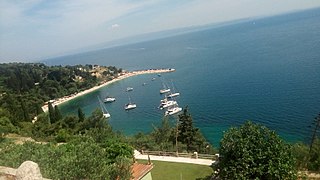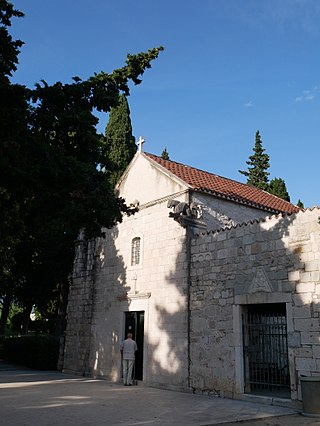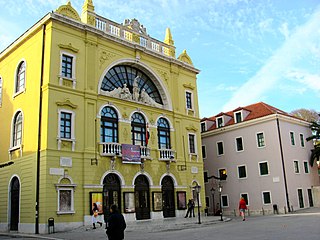15 Sights in Split, Croatia (with Map and Images)
Legend
Premium Sights
Book tickets, guided tours and activities in Split.
Guided Free Walking Tours
Book free guided walking tours in Split.
Welcome to your journey through the most beautiful sights in Split, Croatia! Whether you want to discover the city's historical treasures or experience its modern highlights, you'll find everything your heart desires here. Be inspired by our selection and plan your unforgettable adventure in Split. Dive into the diversity of this fascinating city and discover everything it has to offer.
Sightseeing Tours in SplitActivities in SplitDiocletian's Palace was built at the end of the third century AD as a residence for the Roman emperor Diocletian, and today forms about half of the old town of Split, Croatia. While it is referred to as a "palace" because of its intended use as the retirement residence of Diocletian, the term can be misleading as the structure is massive and more closely resembles a large fortress: about half of it was for Diocletian's personal use, and the rest housed the military garrison.
The Golden Gate, or "the Northern Gate", is one of the four principal Roman gates into the stari grad of Split. Built as the main gate of Diocletian's Palace, it was elaborately decorated to mark its status. Over the course of the Middle Ages, the gate was sealed off and lost its columns and statuary. It was reopened and repaired in modern times and now serves as a tourist attraction.
The Temple of Jupiter (Croatian: Jupiterov hram) is a temple in Split, Croatia dedicated to the Ancient Roman god Jupiter. It is located in the western part of Diocletian's Palace near the Peristyle, the central square of the imperial complex. It was built between 295 and 305, during the construction of the Palace, and was probably turned into a Baptistery of St. John the Baptist in the 6th century, at the same time when the crypt dedicated to St. Thomas was built. Before the entrance to the Temple is one of the twelve sphinxes brought from Egypt by Emperor Diocletian. Scottish architect Robert Adam considered this temple to be one of Europe's most beautiful monuments.
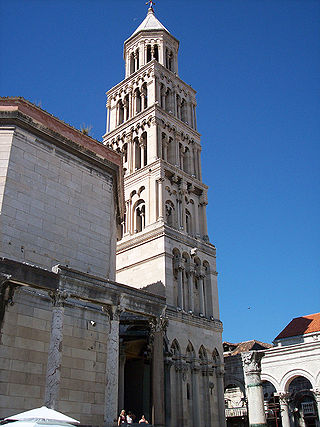
The Cathedral of Saint Domnius, known locally as the Sveti Dujam or colloquially Sveti Duje, is the Catholic cathedral in Split, Croatia. The cathedral is the seat of the Archdiocese of Split-Makarska, currently headed by Archbishop Zdenko Križić. The Cathedral of St. Domnius is a complex of a church, formed from an Imperial Roman mausoleum, with a bell tower; strictly the church is dedicated to the Virgin Mary, and the bell tower to Saint Domnius. Together they form the Cathedral of St. Domnius.
5. Galerija Meštrović
Ivan Meštrović Gallery, is an art museum in Split, Croatia dedicated to the work of the 20th-century sculptor, Ivan Meštrović. The gallery preserves and presents to the public the most significant works of Meštrović, and is in itself an art monument. The permanent collection includes works of sculpture, drawings, design, furniture and architecture. Holdings include original plaster models by the artist, as well as finished works in bronze, marble and wood. The gallery building and grounds were based on original plans by Meštrović himself, and included living and working areas, as well as exhibition spaces.
6. Basement Halls of Diocletian's Palace
The Cellars of Diocletian's Palace, sometimes referred to as the "basement halls", is a set of substructures, located at the southern end of Diocletian's Palace, that once held up the private apartments of Emperor Diocletian and represent one of the best preserved ancient complexes of their kind in the world.
7. Bronze Gate
The Bronze Gate, or "the Southern Gate", is the smaller of the four principal Roman gates into the stari grad of Split. Built as part of Diocletian's Palace, it was originally a sea gate from which the Emperor entered the complex by boat. Today it is the main entry point from the promenade to the cathedral.
8. church of Our Lady of Good Health
Church and Monastery of Our Lady of Health, a famous Marian shrine in Split. Today's church was built in recent times and consecrated in 1937, and is located on the site of an older church from the 18th century. It is located on the north side of Gaje Bulat Square, east of the CNT building in Split.
Wikipedia: Franjevačka crkva i samostan Gospe od Zdravlja u Splitu (HR)
9. Iron Gate
The Iron Gate, or "the Western Gate", is one of the four principal Roman gates into the stari grad of Split that was once Diocletian's Palace. Originally a military gate from which troops entered the complex, the gate is the only one to have remained in continuous use to the present day.
10. Silver Gate
The Silver Gate, or "the Eastern Gate", is one of the four principal Roman gates into the stari grad of Split that was once Diocletian's Palace. The gate faces east towards the Roman town of Epetia, today Stobreč.
11. crkva Svete Trojice
Church of Holy Trinity is a Pre-Romanesque style Roman Catholic church located in Split, Croatia. Out of all early-medieval architectural monuments in Dalmatia, which historians date back to the period between 8th and 11th century, Church of Holy Trinity, with its original shape and rich findings, has a very important place. This small central edifice with six-leaf structure of semicircular arches strung around irregular circle has become one of the most precious heritage monuments of Split and Dalmatia.
12. Arheološki muzej
The Split Archaeological Museum is the oldest museum in Croatia, established in 1820 by a decree of the Dalmatian government in Zadar. Some 150,000 artifacts cover prehistoric times, the period of Greek colonization of the Adriatic, Roman Provincial and Early Christian era to the early Middle Ages and the period of Croatian popular rulers. There is a collection of stone inscriptions from Salona and the collections of Graeco-Hellenistic ceramic objects, Roman glass, ancient clay lamps, bone, and metal articles, gems and coins.
13. Bambina glavica
Bambina glavica is a locality and hill (glavica) on the southern part of the Marjan peninsula, in front of the southern slopes of Marjan, and east of the bay of Kašjuni. The highest peak is 59 meters high. It was named after the nickname of the Tomić - Bamba family from Split.
14. Crkva svetog Stjepana
The Church of St. Stephen the First Martyr, a Roman Catholic sacral building erected in 1814 on the Sustipan peninsula in Split on the site of the famous demolished Benedictine monastery of St. Stephen. Stephen under the pine trees. During construction, spolia from the demolished monastery were built into its façade, and the interior was decorated with six ancient marble columns transferred from Diocletian's Palace, as well as the marble altar of St. Nicholas. Anne brought from the defunct Benedictine monastery of St. Anne. Maria de Taurello.
15. Hrvatsko narodno kazalište u Splitu
The Croatian National Theatre Split operates in a building erected on May 6, 1893 on Gaje Bulat Square in Split. The Croatian National Theatre in Split is the central theatre in Split and the most important theatre institution in Dalmatia. The theater building is a protected cultural property.
Wikipedia: Hrvatsko narodno kazalište u Splitu (HR), Website
Share
How likely are you to recommend us?
Disclaimer Please be aware of your surroundings and do not enter private property. We are not liable for any damages that occur during the tours.
